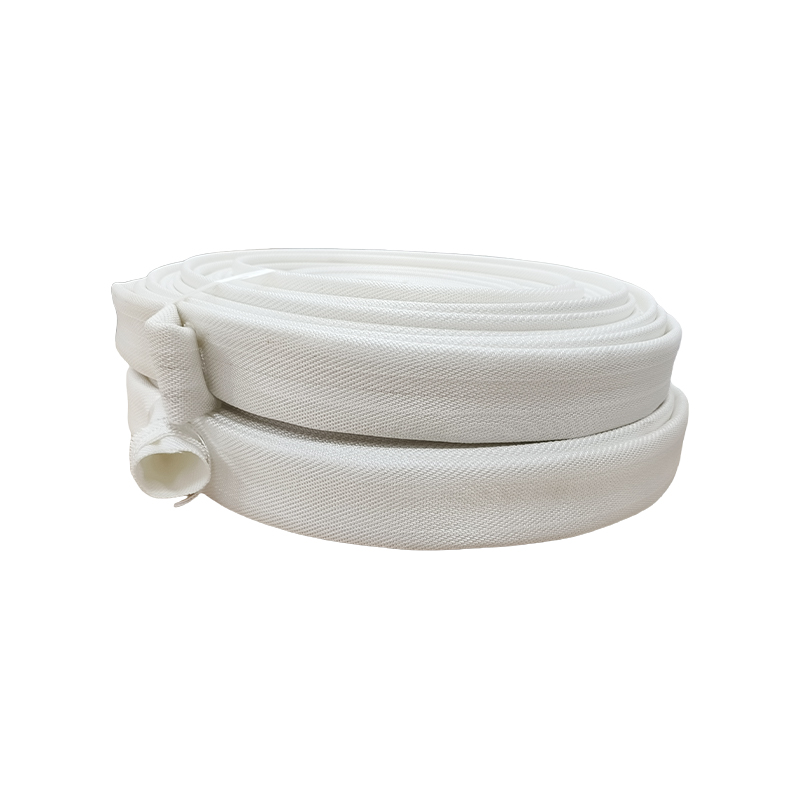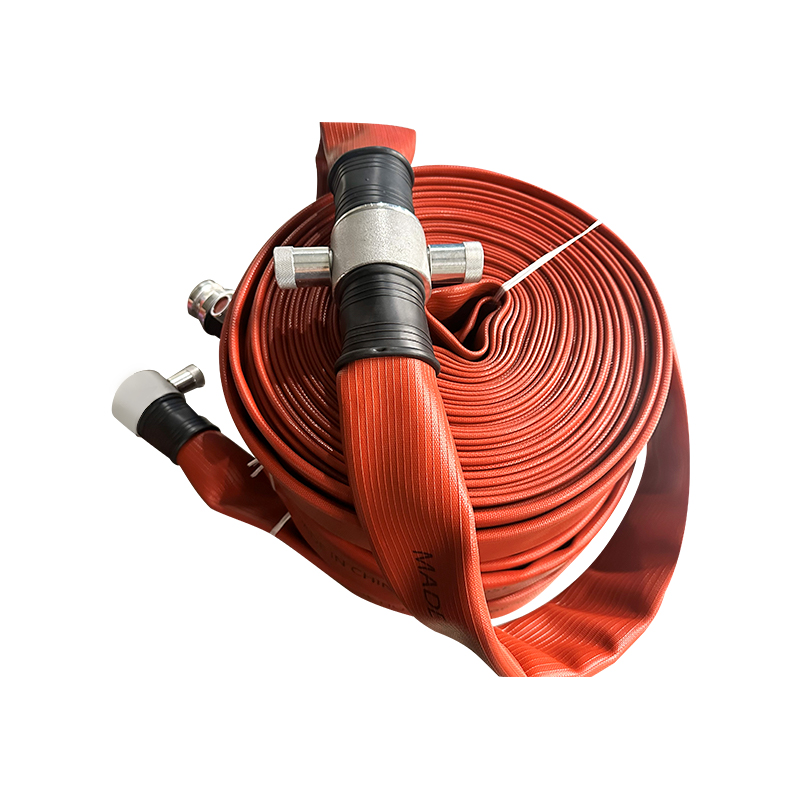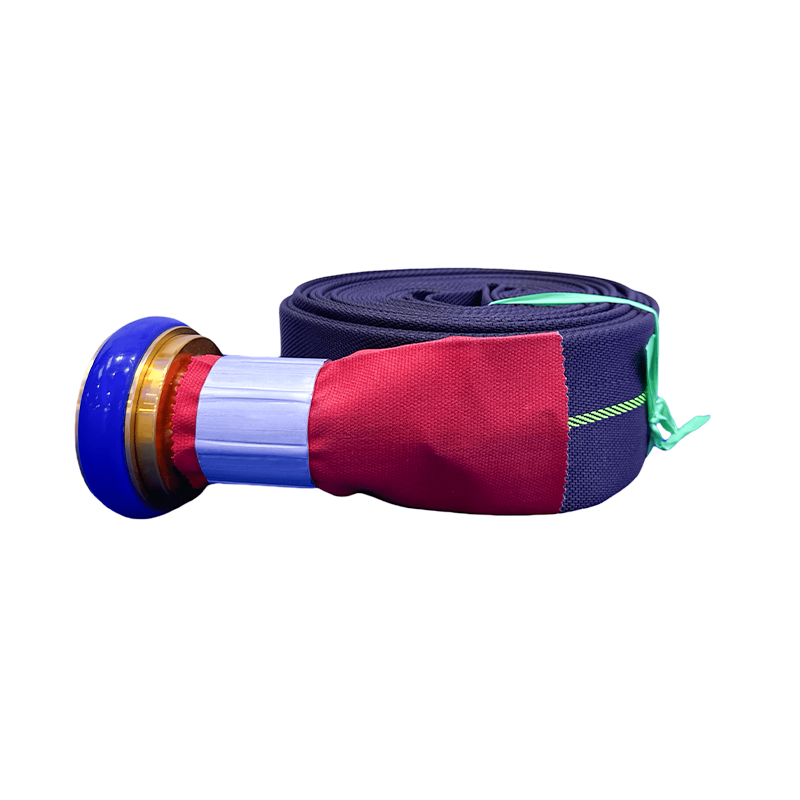The Fundamentals of Layflat Hoses: Features and Design
What is a Layflat Hose?
A layflat hose is a type of flexible pipe that lies flat when not in use. It is primarily made from durable and lightweight synthetic materials (such as PVC, TPU, etc.) and typically features an internal high-strength fiber layer for reinforcement to withstand the water pressure in irrigation systems. This unique design allows it to expand into a circular shape when water flows through it, just like a standard pipe, but returns to its flat state when drained. This significantly saves storage space and makes transportation much easier.
Key Design Advantages of Layflat Hoses
1. Materials and Structure:
- Outer Layer: Made from a wear-resistant, UV-resistant, and corrosion-resistant synthetic material to protect the hose from external elements.
- Inner Layer: Features a smooth texture to reduce water flow friction, ensuring efficient water delivery.
- Reinforcement Layer: The core consists of a high-strength polyester or polyester fiber woven layer, which gives the hose excellent tensile strength and burst resistance, allowing it to withstand higher working pressures.
2. Foldability and Portability:
- Storage: The flat design allows multiple hoses to be tightly rolled or folded, saving up to 80% of the storage space compared to traditional rigid pipes.
- Transportation: The extremely light weight and compact volume significantly reduce transportation costs and difficulties, making it especially suitable for temporary irrigation projects that require frequent movement.
3. Durability and Pressure Resistance:
- Thanks to its reinforced fiber layer, a layflat hose for irrigation can handle much higher working pressures than a typical garden hose. Its pressure range is usually between 2 and 10 bar, and sometimes even higher.
- Good UV and chemical resistance allow it to withstand harsh outdoor environments and the transport of water with fertilizers.
Layflat Hose for Irrigation: A Powerful Aid in Modern Agriculture and Landscaping
Applications in Modern Agriculture
- Main Water Supply Lines: In large-scale farmlands, layflat hoses are often used as temporary or semi-permanent main supply lines to connect water sources (e.g., pumps, reservoirs) to various irrigation zones. Their rapid deployment and retrieval make them particularly suitable for the seasonal irrigation needs of crops.
- Drip and Sprinkler System Supply: A layflat hose can serve as the main supply pipe for drip tapes or sprinkler laterals, providing a stable and uniform water supply to ensure the entire irrigation system has adequate pressure and flow.
- Mobile Irrigation Equipment: In wheel-based or center-pivot irrigation systems, the flexible layflat hose can easily move with the equipment, enabling automated irrigation over large fields.
Applications in Landscaping
- Parks and Golf Courses: A layflat hose can be used for temporary or targeted irrigation of park lawns, trees, or golf courses. Its portability allows workers to easily move it from one area to another without complex pipe installation.
- Sports Fields and Landscapes: In football fields, baseball fields, or large landscape areas, layflat hoses can be quickly connected to sprinklers or taps for efficient watering, ensuring the health of plants and turf.
| Comparison Feature | Using Layflat Hose for Irrigation | Using Traditional Rigid Pipes |
|---|---|---|
| Setup Speed | Fast (can be deployed quickly by one person or machine) | Slow (requires multiple people, complex pipe connections) |
| Storage Space | Small (can be rolled or folded, saving significant space) | Large (occupies fixed space, difficult to move) |
| Transport Cost | Low (lightweight, small volume) | High (heavy, requires specialized transport) |
| Water Efficiency | Excellent (sealed delivery, no leaks) | Moderate (potential leaks at joints) |
| Labor Demand | Low (simple to operate, easy to maintain) | High (installation and maintenance are time-consuming and labor-intensive) |
| Adaptability | Strong (can adapt to uneven terrain) | Weak (requires level ground or special supports) |
How to Choose and Use a Layflat Hose for Irrigation
Choosing the Right Layflat Hose
Selecting the right hose requires considering various factors to ensure it perfectly fits your irrigation project.
1. Pressure Rating:
Choose a hose based on your pump's head and the maximum working pressure of your irrigation system. Layflat hoses come in various pressure ratings, from low-pressure (e.g., 2-4 bar) to high-pressure (e.g., over 10 bar). Choosing a hose with a working pressure slightly higher than your system's requirement ensures safety and durability.
2. Diameter:
The diameter determines the water flow rate. Select the appropriate diameter based on the size of the irrigation area and the required water volume. If the diameter is too small, it will increase flow resistance, reducing flow and efficiency. If it's too large, it will increase costs and weight.
3. Material:
Layflat hoses are typically made of PVC and TPU, each with its pros and cons.
- PVC hoses are less expensive, suitable for temporary or seasonal irrigation projects with strict budget constraints.
- TPU hoses are more costly but offer superior wear, weather, and low-temperature resistance, making them ideal for long-term use, frequent movement, or harsh environments.
4. Abrasion and UV Resistance:
If your layflat hose will be frequently dragged over hard or rocky ground, or exposed to long periods of sunlight, choosing a product with high abrasion and UV resistance is essential.
Installation and Maintenance: Key to Extending Lifespan
Proper installation and maintenance of a layflat hose maximize its performance and significantly extend its service life.
Installation and Connections:
- Connectors: Ensure you use connectors that match the hose's diameter and install them securely to prevent leaks or detachment under high water pressure.
- Flat Laying: When deploying the layflat hose, try to use flat ground and avoid sharp rocks, glass, or metal debris to prevent scratches on the hose body.
Daily Maintenance:
- Regular Checks: Periodically check the hose surface for any damage, cracks, or bulges. If issues are found, they should be repaired or replaced promptly.
- Draining: After irrigation, it is crucial to completely drain the water from the hose, especially before winter, to prevent residual water from freezing and causing the hose to burst.
Storage:
- Clean and Dry: Before storing, ensure the inside and outside of the layflat hose are thoroughly cleaned and completely dry.
- Proper Storage: Roll or fold the hose neatly and store it in a dry, cool, and dark place to avoid direct sunlight and compression, which can cause material aging or deformation.
An Outlook on the Future of Layflat Hoses
1. Summary: The Pivotal Role of Layflat Hoses
As we've explored, the layflat hose for irrigation plays an increasingly vital role in modern agriculture and landscaping as an efficient, flexible, and economical irrigation tool. It not only boosts irrigation efficiency and conserves valuable water resources but also significantly reduces labor intensity and operational costs with its lightweight, easy-to-deploy, and easy-to-retrieve features. As global attention to sustainable agriculture and water-saving technologies grows, the layflat hose's value will become even more pronounced.
2. Outlook: Technological Innovation and Industry Development
Looking ahead, the technological development of layflat hoses will likely focus on these areas:
- Material Science Innovation: With advances in new materials, future layflat hoses will be lighter, more abrasion-resistant, and more pressure-tolerant, with enhanced UV and corrosion resistance to withstand more extreme environmental conditions.
- Intelligence and Automation: By integrating IoT and smart control technologies, future layflat hoses may incorporate sensors to monitor water pressure and flow in real-time. They could also link with smart irrigation systems to achieve more precise and automated water management.
- Customization and Specialization: The diversification of market needs will drive the development of layflat hoses into more specialized, niche areas, such as customized products for specific crops or soil conditions.
3. Partnership: The Role and Value of Quality Manufacturers
In this wave of industrial development, specialized manufacturers like Taizhou Jun'an Fire Technology Co., Ltd. play a crucial role. With its modern and advanced production equipment and professional technical personnel, the company not only produces high-quality fire hoses but also focuses on providing first-class agricultural hoses. By fully absorbing the advantages of similar products both domestically and internationally, they are committed to designing and manufacturing layflat hoses with excellent performance.
The ability of Taizhou Jun'an Fire Technology Co., Ltd. to offer OEM and ODM services demonstrates its strong R&D and customization capabilities, enabling it to meet evolving market demands and create tailored irrigation solutions for customers. The company's consistent commitment to product quality and after-sales service ensures that its products earn long-term customer trust and support.
In the future, it will be these enterprises—those with professional technology, a focus on product quality, and excellent customer service—that will continue to drive the development of layflat hose for irrigation technology, contributing to the efficient and sustainable growth of global agriculture and landscaping.
1" - 6" Canvas Hose PVC Lined Layflat Hose For Fire Extinguishing/Agricultural Irrigation


 en
en
 عربى
عربى









